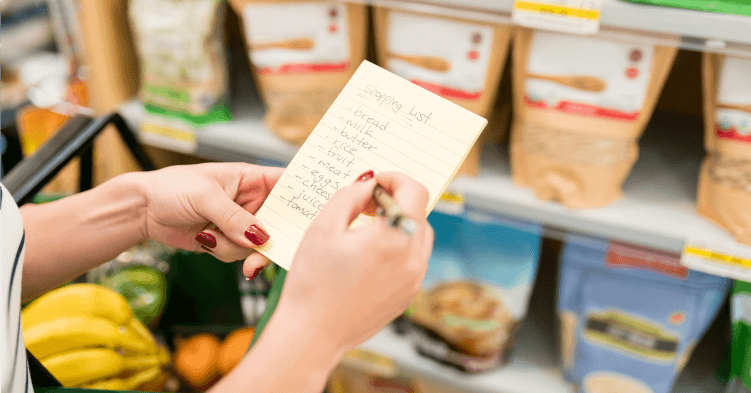How To Save Money: 13 Ways That Make It Easy
Maybe you’ve tried in the past. You cut out your morning coffee. You cooked more and ate out less. And still you ended up short — or shorter than you’d hoped.
So how do you save money?
One of the biggest secrets with saving is that it doesn’t have to be hard. In fact, the easier it is, the more likely you are to stick with it — and succeed. So try strategies that keep it simple. Try strategies that rely less on sacrifice and more on impact. The biggest hurdle is just getting started. Here are some tried-and-true ways to make saving easy.
1. Make It Invisible
When you open your banking app and see your savings account, it can be tempting to spend that money. Your savings account should only be used in emergencies, or if you were saving up for a specific large purchase.
Remove the temptation to spend it by making it invisible. You can open an account at a different bank, set up transfer limits or open an account with withdrawal restrictions. Some banks even allow you to hide accounts on their app.
2. Automate Your Savings
You can set up automatic transfers from your checking to your savings account to make stashing cash easy. Then call or use the online banking feature on your bank’s website to set up a transfer schedule. It removes the friction of manually putting money away and helps ensure you don’t forget.
If you get paid through direct deposit, you might be able to split your paycheck so some money automatically goes into your savings account. That way you won’t even see the money in your checking account and be tempted to spend it.
3. Pay Yourself First
When your paycheck comes in, the very first thing you should do is take a little bit and put it into a savings account. You can start small to get into the habit of saving. Even just a few dollars a paycheck is better than nothing.
You might find yourself with a little extra cash in your budget as you start incorporating some of these tips. You can then change your savings plan and work your way up to putting away at least 10% of your income.
4. Ask About Discounts and Use Coupons
A lot of companies offer discounts for public servants and students. You just have to ask. Some of the most common ones are for: teachers, military members, first responders and students. Usually you’ll just have to show a form of ID that verifies you’re in one of these groups.
You can also up your coupon game. Look in the mail or online for deals and discounts on your favorite items. Just remember, if you weren’t already going to buy it, the sale is not saving you money.
5. Use Cash Not Cards
If you’re having trouble sticking to a budget, you’re not alone. Credit and debit cards make it hard to visualize how much you’re actually spending. It’s easier to swipe a card than it is to count cash.
If you have a spending limit you want to stay under, visit an ATM and take out only that amount. Leave your credit cards at home and use cash. This keeps you from overspending when you’re out.
6. Gamify Your Savings
It’s no secret that people prefer instant gratification. This is a major problem about savings — you won’t see results for a while and it can be frustrating. You can change this by turning your savings goals into a game or challenge. There are a ton of budgeting and savings apps out there that use this “gamification” method to help consumers save.
If you’re looking for a low-tech option, there are some fun savings challenges you can try. Like the 52-Week Challenge — you start by saving $1 the first week, $2 the second, $3 the third week and so on. If you do this challenge for one year (52 weeks) you’ll save $1,378!
7. Cancel Your Subscriptions
Over 40% of Americans are paying for subscriptions they don’t use. If you’re looking for easy ways to save money, go through your bank account statement and look for any subscriptions (like streaming services or even your gym membership) that you may have forgotten about or don’t use. They may seem inexpensive but they can add up quickly. Clicking cancel or unsubscribe can put a lot of money back in your wallet.
8. Learn To Say No
It’s hard to say no to stuff you want to do, like shopping with friends, vacations or even just going out for dinner and drinks. Seeing friends and influencers on social media can increase the feeling that you’re missing out.
You can still work some fun into your budget. Finding a balance between enjoying life now and saving for your future can be key in keeping you on track. But if you want to reach your financial goals, you’ll have to say no to things that don’t fit the budget. Keeping your personal finance goals in mind and what they’ll mean for your future can help take some of the sting out of missing out.
9. Track Your Spending
It’s easy to dismiss spending a few dollars here and there. After all, it’s just a few dollars and it doesn’t seem like they would make that much of a difference.
Those few dollars and random impulse buys throughout the day can add up fast. To combat this, try tracking everything you spend in a notebook or on your cell phone. You’ll likely find that you bought some things you didn’t need or even want.
Taking a moment to write down what you’re spending gives you an extra second to think about if this is something that’s important or brings you joy. While your morning coffee might be a keeper, you’ll find some other non-essential purchases you won’t even miss.
10. Build Your Emergency Fund First
The first savings account you should build is your emergency fund. The rule of thumb is to have about three to six months of expenses saved, but that’s not a realistic starting point for most people.
Your first savings goal should be to save about $500 – $1,000 into an emergency fund. That way when a surprise expense pops up, it won’t throw off your whole budget. Just be sure to rebuild the account if you have to tap into it.
11. Build a Better Budget
The word “budget” can be anxiety inducing. It conjures images of going without, scraping by or just making due. But your monthly budget can be a really powerful tool to help you prioritize the things that are actually important to you. There are many budgeting apps that can help you build a budget that works for you.
With a good budget, you’ll know where every dollar is going and what it’s doing to help you. Your savings, basic needs and bills should come first. With the money that’s left you have a few options. You can put a little more into savings, or you can use it to splurge on some of the things that make you happy.
As long as you’re spending less than you earn and you’re able to put some cash away for savings, you should be in pretty good shape. A budget helps you keep track of your dollars and ensures that you’re only spending on the things that are important to you. If you’re spending more than you earn, it may be time to reevaluate and either increase your income or adjust your spending habits.
12. Look For Ways To Reduce Your Spending
You can find ways to lower your monthly bills. It can be as simple as sticking to your shopping list at the grocery store or turning down your thermostat. Or you can get a bit more creative and start shopping around for cheaper car insurance, or even make your home more energy efficient to lower your electric bill. If you want to reach your financial goals faster, you can reduce your spending to give yourself some extra money.
13. Pay Off Debt
Debt payments are one of the biggest drains on personal income, which can make it hard to save. If you want to boost your savings, getting out of debt will make it much easier.
Even with hefty student loans, credit card debt or a mortgage, you can use tactics like refinancing to lower your payments or debt avalanche to knock out your debt with high interest rates.
Paying off your debt can also help you rebuild your credit score, which will save you money in the long run by helping you qualify for lower interest rates and rewards like cash back.




